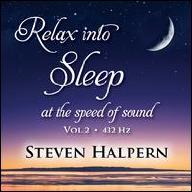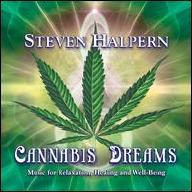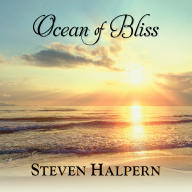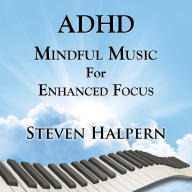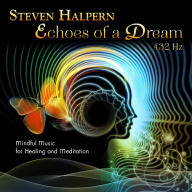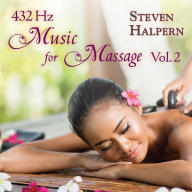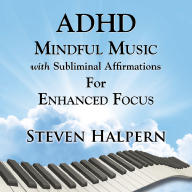Beginning in the late 1960s, Halpern was active in the New York City jazz scene as a trumpeter and guitarist. His disgust at the adverse effects of life in the fast lane were accentuated by a move to California, where he perfected his idea of "anti-frantic alternative" music. Based partly on his metaphysical beliefs and partly on more solid scientific research into the effects of sound on the human body, he came to the conclusion that the Western foundation of tension and release in music couldn't by nature provide listeners with relief from stress. He decided the answer was to create music that "didn't go anywhere" in the traditional sense but instead immersed the listener in a positive atmosphere conducive to recuperative and transcendental experiences. Halpern created music that was centered largely around cascades of major-key arpeggios improvised at the electric piano, and he added generous helpings of reverb to create a spacey, other-worldly feeling. He took a certain amount of inspiration from Asian classical music and looked into the ceremonial, magical, and healing aspects of sound used by ancient cultures.
His debut album, 1975's Christening for Listening (A Soundtrack for Every Body), included meditative pieces as well as funky jazz influenced by his time in the New York music scene. Focusing entirely on the softer, more relaxing pieces, the album was re-released in 1976 as Spectrum Suite, and subsequently acknowledged as one of the first new age albums. Mainly issuing material on his own SRI (Spectrum Research Institute) and Halpern Sounds labels, the prolific artist collaborated with artists such as Daniel K. Stat and Georgia Kelly, in addition to releasing solo efforts like 1977's I: A Cosmic Attunement and 1978's Starborn Suite. Tuning the Human Instrument, his first book, was published in 1977.
1980's Eastern Peace combined the droning sounds of the tambura with Halpern's mystical piano playing. Some of his more abstract and even haunting recordings, such as 1980's Organ of Perception and 1981's Rings of Saturn, were only released on cassette. Additional albums like 1982's Lullabies and Sweet Dreams would help establish themes prevalent throughout his entire career. He started releasing subliminal and guided meditation cassettes intended for massage, study, fitness, and other purposes, during the early 1980s. With multi-instrumentalist Dallas Smith, he returned to more rhythmic, jazzy material with 1984: Newsound, additionally producing Threshold and Natural Light together. Starting with 1985's Rhythms of Vision, Halpern began releasing material through the Gramavision label, making his music more widely available in traditional record stores. His second book, Sound Health, was published the same year. Continuing to work with musicians like David Friesen and Paul Horn, he compiled the best of his collaborations on 1987's Among Friends (Collection I).
In addition to purposeful releases like Music for Massage and In the Key of Healing, Halpern began releasing ethnic fusion albums more frequently during the 1990s. 1996's Afro-Desia featured percussionist Suru Ekeh, and 2000's Deja-Blues was inspired by Moroccan music and mysticism. Cruise Control, a rock-influenced album co-credited to the Sound Medicine Band, appeared in 2001. Halpern collaborated with Chief Sonne Reyna on 2004's Healing Songs of Earth Sky, and the percussionist also appeared on 2007's Drum Spirit (with the Sound Medicine Band) and In the Om Zone. All the while, self-explanatory releases such as Crystal Bowl Healing and Relaxation Suite continued to appear at a regular clip.
Several brainwave-focused releases appeared during the 2010s, including the Deep Theta and Deep Alpha series. In 2017, Halpern followed up his popular 2004 Sleep Soundly album with Sleep Soundly, Vol. 2. He also issued a series of albums to aid with ADHD in the late 2010s, including ADHD Mindful Music for Enhanced Focus in 2019. Along with deluxe editions of his best-known early albums, during the 2020s Halpern released titles such as Cannabis Dreams and Relax Into Sleep at the Speed of Sound, Vol. 2. ~ Linda Kohanov & Paul Simpson, Rovi


